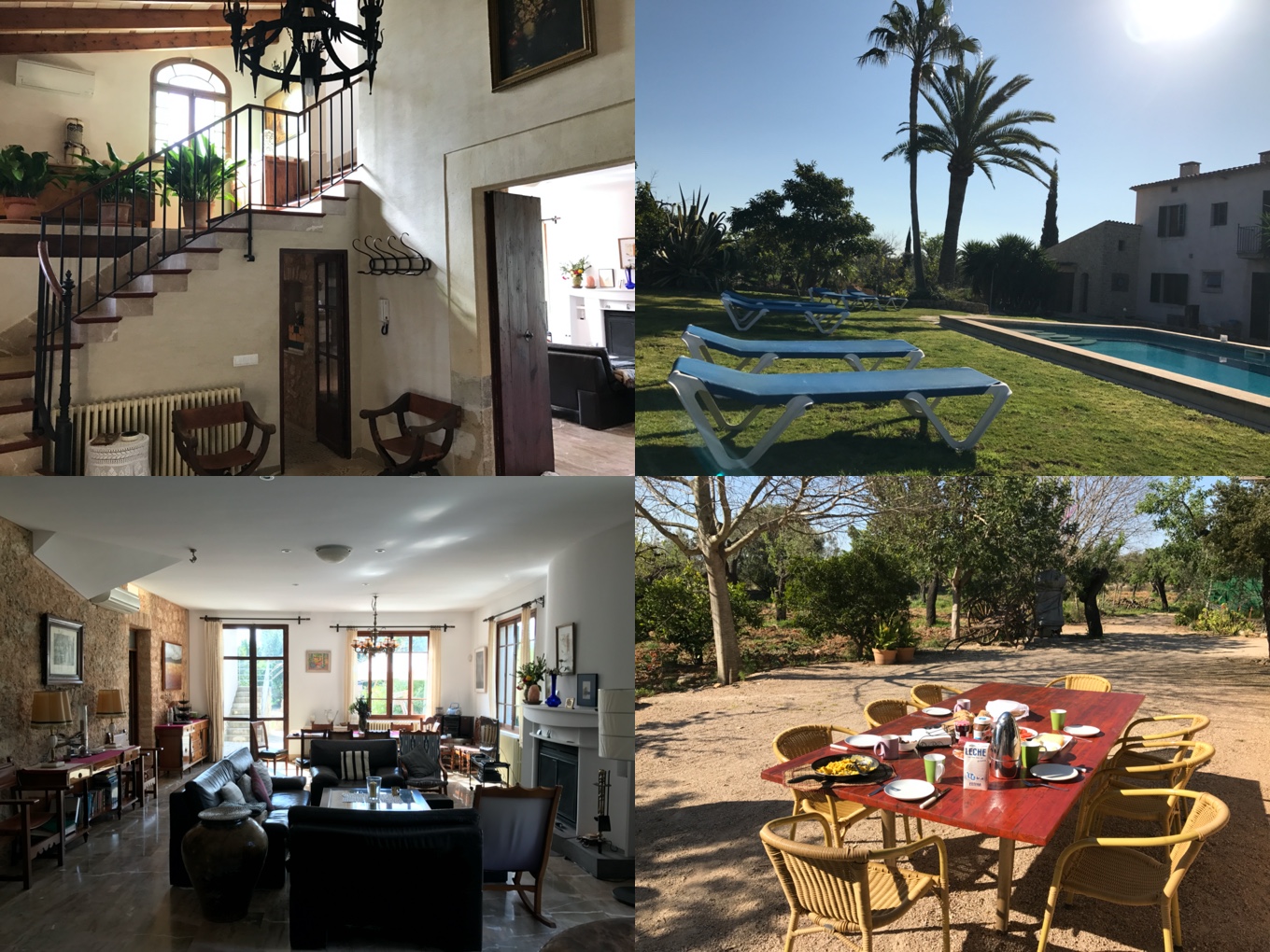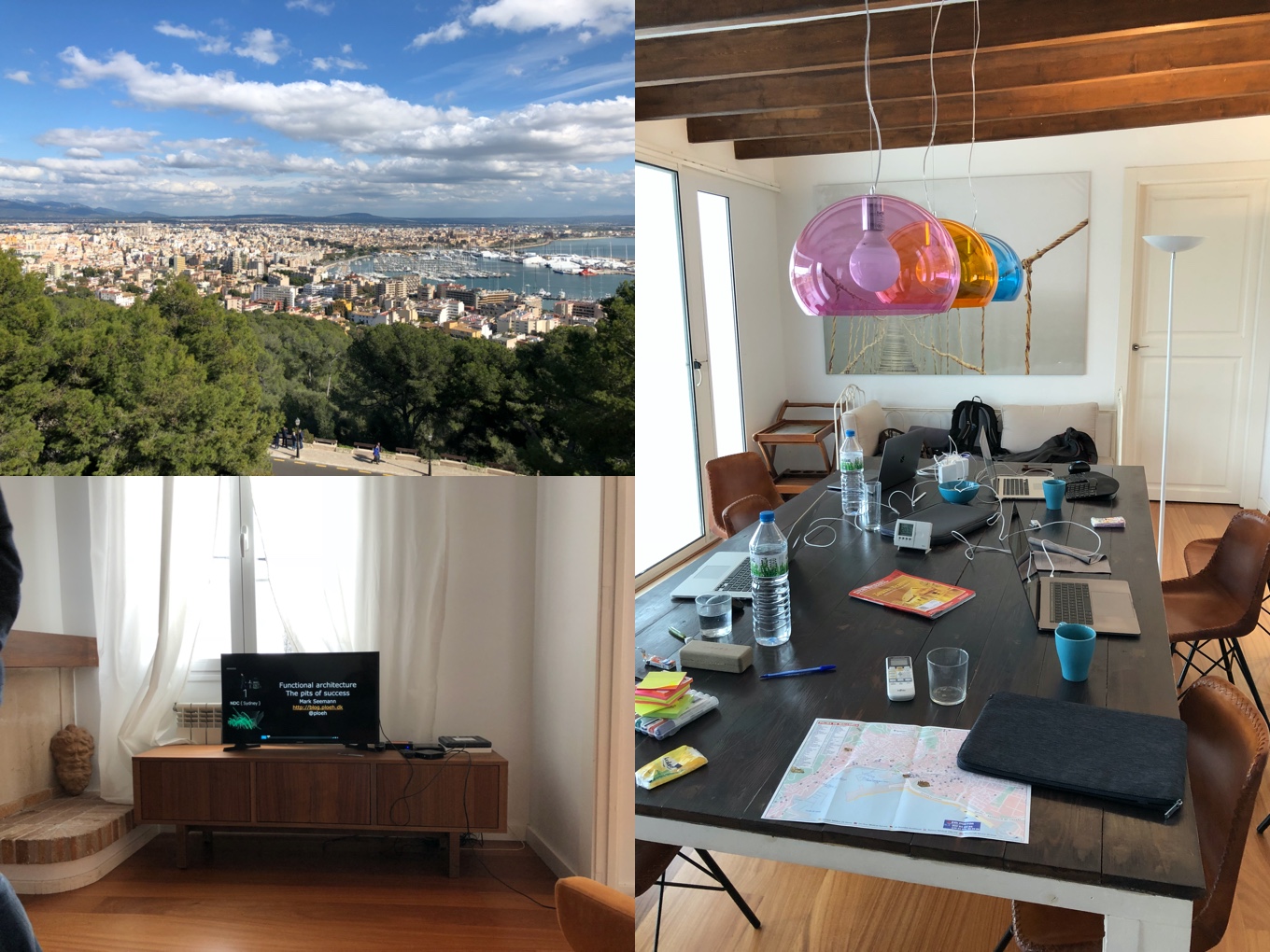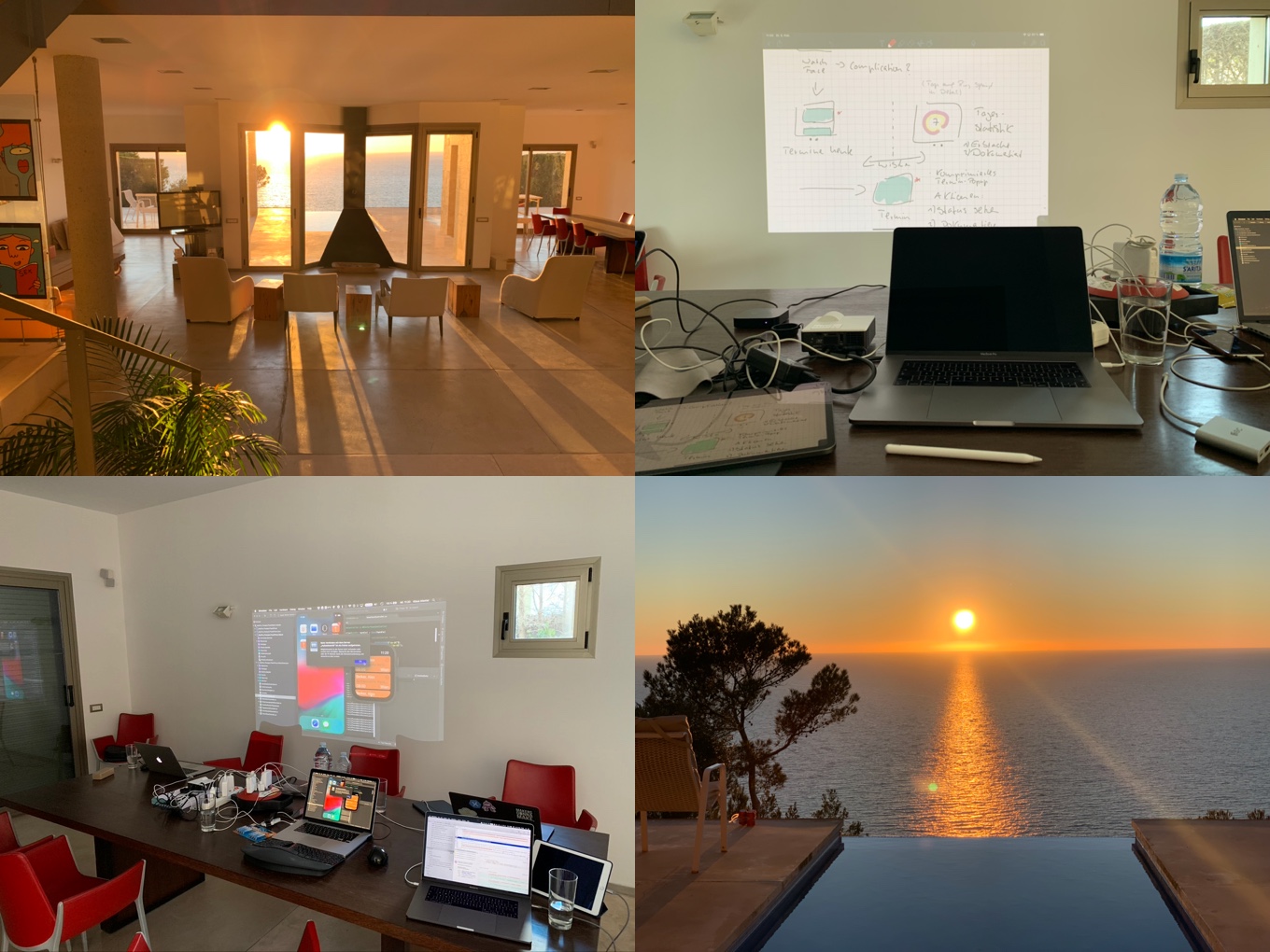My Five Years Without Pants
A lot of people are just about to learn how to work from home. In fact, my team and I have been doing that for many years. Here is what I observed and learned along the way.
Published on Sat, April 25, 2020
First Try? A Failure
To be honest, my first experience when working from home wasn't a good one. I had just split up with my company's founding partner, and as I had no employees and no kids at the time, I decided to work from home. I usually would sleep in till 10 or 11 in the morning, get slowly started at noon, only to be interrupted in the late afternoon when my better half returned from work. So I clearly lacked the discipline that is needed as a remote worker.
I was already in business for some years, and on paper, my company was acting like a "real one." But back in 2011 for many, if not most people, that meant you would have some proper office space somewhere. So it happened that a potential client refused to even meet with me because I would only offer him a meeting in a restaurant nearby.
Some Office Space To The Rescue
What seems to be laughable from today's perspective, made me realize that it was about time to get a new office. Fast-forward another year I was renting a proper office in a lovely old building from 1900 just two minutes from my apartment. Oh, and I had new colleagues working there with me. So at that point, I thought having office space at a central location in Munich would be a real asset, especially for recruiting. I couldn't be more wrong about that.
Another three years later, I had just shut down my latest venture. Which also meant I had to let go of my team except for one colleague. So there I was: Sitting mostly alone in our office, open for a new adventure.
We soon started to work for a couple of clients building mobile and web apps. Only those clients were merely interested in our know-how, but not our presence at their sites. Soon the company grew again. But still, no one except for me would work at our office.
Hiring Remotely Is A Game Changer
I already realized earlier that hiring excellent people in Munich was as tough as it can get. And it was especially hard if you're small and need to act cheap. This city is booming for centuries, the cost of living is insanely high compared to other places in Germany, and competition is fierce. For example, while I am writing this, Google and Apple are constructing buildings to add another 3.000 highly paid jobs just around the corner.
So when I needed to add new people to my team, I gave up on the idea of having all of them working at our office. Instead, I started to explicitly advertise that we would be open for people to work remotely. That opened a ton of opportunities that I would have never had when only being able to recruit locally.
For every position I had to fill, I was able to choose from a large pool of very talented people. However, I often had some limiting factors which naturally reduced the set of potential candidates. For example, for some projects, I needed excellent German language skills as the project's problem domain wouldn't allow otherwise. Or I would look for specialists in a particular technology as I couldn't afford to invest in months of onboarding. I ended up working with colleagues distributed all around Germany and Europe.
Fun fact: One of our new team members back then was already living in Munich. But he would seldom come to our office to work on-site, but rather save the 2x30 minutes of commuting time a day and spend it otherwise.
It's Not Suited For Everyone
While I knew what technical skills I was looking for when filling a new position, I also knew that working from home was not automatically a perfect fit for everyone. As someone who hires, and even as someone who gets hired for a remote position for the first time, it's often not possible to predict the previously mentioned discipline factor. But another critical factor is possible to check during the interview process: Communication skills.
I usually would give candidates in the final round an assignment, like a small coding challenge. They would then have to solve it within a week or so.
In one case, one of my favorite candidates by then missed that deadline by sending in an incomplete sample of his work. As he later explained, he wasn't able to finish it because of his wedding the other day – which I was not aware of. How could I? He didn't tell me. Eventually, I decided to pass on him. If he wasn't able to clearly communicate such an important event in his life, how could I trust he would be able to communicate in a proper way when things would get rough while working together?
Online Collaboration Needs To Be Learned
Communication in a distributed team is already tricky anyway (see also the next section). A couple of things I learned are:
- Have clear processes and guidelines in place, but keep them simple.
- Always question those rules and simplify wherever possible!
- Written communication is crucial, especially in asynchronous setups.
- But it's tough to transport emotions through text, so having the ability to talk to each other face to face is very important as well.
- Speaking of emotions: Video is always preferred over audio.
- Nothing replaces a whiteboard session with everyone being physically present in the room. At least some tools come close.
- Tools like Slack or Microsoft Teams are both a curse and a blessing. There is still a lot of potential for disruption for new players...
Synchronous Vs. Asynchronous Remote Work
For most parts of the last years, we were working for distinct sets of projects and clients. Which led almost naturally also to independent project teams, which I wouldn't force to work in a particular way. Interestingly two different ways emerged.
The Synchronous Team
The synchronous team would schedule their day around working together during a fixed set of core hours. This is possible because all team members would work in the same time zone. The glue that holds everything together is a communication platform like Slack. People would greet each other in the morning, share some personal stuff, have a video call after lunch, and would then say goodbye to each other in the late afternoon. It feels almost like a regular office job.
The good thing: I've never felt lonely working on such a team because it always felt as we would work not only together on the same thing but together in the same virtual room. Water cooler talk would happen in specific off-topic Slack channels. And sometimes our 15-minutes daily video calls would escalate into hour-long chats about personal life, politics, sports, or whatever would distract us from some dull tickets waiting in the backlog.
The not so good thing: It quickly can add a bit of social pressure. I, for example, would expect everyone on the team to answer my questions on Slack within a few minutes, although I knew this was nonsense. But we were, after all, in the same room, weren't we?
The Asynchronous Team
Located almost at the other end of the spectrum is the asynchronous team. Its members would work on different days of the week or different hours of the day. This almost automatically leads to much less time spent together in video calls or a text chat.
The good thing: The aforementioned social pressure appears to be much less of a problem. Because if it is accepted for everyone to work at different times, it cannot be expected from anyone to be available for instant communication.
A positive side effect is that much more communication happens in a written way and, thus, is automatically documented. And as someone who's own scope of work as a manager often not necessarily aligns with the scope of work of my colleagues, I also feel less bad about not "being there" all the time. For example, when driving through half of the country to attend useless on-site meetings with clients ;-).
The not so good thing: This collaboration model clearly lacks the water cooler chats and can make team members feel more isolated and lonely than the other one.
The Trade-Off
That's the deal: You usually either get more private conversations and a closer relationship to your fellow team members, or more flexibility and power about your own time schedule.
But: There's a trick that can help overcome some of the biggest problems with the asynchronous model. And it works very well for the synchronous one, too.
Team Retreats: All Good Things Go By Three
While we already occasionally met in person at our Munich office or on-site for client meetings, this was mainly work-centered. It's clearly better to have a beer at a hotel bar than to only see each other through video calls. But after some time, the idea grew that we could meet in person for a few more days.
At that point, I remembered the book "The Year Without Pants" By Scott Berkun, from which I shamelessly stole the title for this post. In his book, Scott describes how he helped his employer back then, Wordpress, to grow and re-shape the company by building remote teams.
And one thing I remembered, in particular, was him having off-site meetings with his peers. At those, they would code during daylight and have some fun together in the evenings. But they wouldn't meet at some headquarter of Wordpress but instead, go to some cool place in the world.
We wouldn't have the means to fly over to Hawaii. But still, a flight to Mallorca from any German airport often is cheaper than a train ticket between different German cities. So the idea of flying to the Mediterranean for a few days was born.
Attempt No. 1

We booked flights, cars, and went to this awesome finca half an hour from Palma de Mallorca. As it was pre-season, prices were quite affordable.
I didn't make a large plan upfront. We wanted to work together on some issues of one of our current client projects, and maybe go hiking one afternoon, and see how it goes the other days.
Overall, it was a very cool experience having the team around in person for more than a night at a hotel bar. Especially as the location didn't disappoint. We could have breakfast in the eastern part of the garden and barbeque in the evening in the west. If it only were not a bit too early for the pool...
Learnings:
- It's one thing to collaborate with people daily through text and video chat, and it's a different affair to share a house with each other. Different people do have different expectations and quirks. Surprise! And if you don't talk about them in advance, you might have to overcome some subtle conflicts. Like to agree on a wakeup time, and who is responsible for making breakfast ... or cleaning up the kitchen afterward ;-).
- The day you arrive and the day you leave are basically wasted. Don't make any plans for them except for having a welcome dinner and a farewell breakfast.
- You want to go hiking or to the beach? Don't expect those days to be productive either. Most of those activities will eat too much time.
- Set clear goals for what you want to achieve during the whole trip in advance.
Attempt No. 2

A year after our first trip I thought of going to a city for the next one. It was a close race between Barcelona and Palma de Mallorca. Palma won. We rented a large apartment in walking distance to the city center. This enabled us to go out for dinner on most days and to explore the city on foot. We didn't even have to rent cars, as taking taxis was much cheaper and faster.
This time we also prepared the trip better than in the previous year. We choose some topics we wanted to look into together and which we didn't have the time for during our regular project jobs.
Learnings:
- Having agreed upfront on some rough ideas on what you want to look into is better than nothing, but still not enough to create some good vibes.
- Five days are better than four because this leaves you with three full days on-site!
- Having a lot of cool bars and restaurants in the close distance is a good thing.
- Grocery shopping can be done daily in small portions, so you don't have to leave literally liters of beer and wine beyond...
Attempt No. 3

After two attempts, in which we had improved, after all, it should get even better the third time. This time we didn't discuss the location but booked straight our flights to Palma. As there were no cool locations available in the city center, I slightly increased the budget, so we got a unique place to stay. This place was just breathtaking (and weren't we going there in February, it would be impossible to afford it in nearly any other month).
And we came with a concrete plan for the whole week. I remembered Scott Berkun's stories of building some new features during their trips, which could be of use for the entire company. So we decided to give that a try, as well.
We wanted to build something end-to-end: Specifying it, making it, shipping it. And that's what we did. It created that kind of spirit I was missing the first two times. Because we committed on a common goal, everyone left that nine-to-five mindset at home, and we were even coding at night in front of the fireplace while having some beers. Not following for some time our own professional rules about tickets, branches, code reviews, etc. also felt relieving. Eventually, we accomplished what we aimed for and built and shipped a real piece software.
Learnings:
- Having the team committing on a common goal, which is ambitious but realistic, always makes sense. And it especially does in such a context.
- Going to a place that no one could afford during normal vacation time felt like a special reward.
Conclusion
After some years of trying and learning, I can say: Working remotely and working together as a (small) distributed team works. And it does today probably better than ever before due to a variety of technical solutions for all kinds of problems.
Changing the culture of an existing team or even a current medium-to-large-sized company might be another story, of course. But if you're going to start a new venture and think about whether or not you should choose that path: Go ahead, give it a try.
By the way, the last confession: I lied in the clickbaity headline. Most of the time, I kept my pants on. Because I learned from my early mistakes and, therefore, rarely work from home myself. I kept the office space until today and sublet half of it. That way, I can have both – the flexibility of working remotely and having nice company during lunch breaks. 😎
Drop me a line and let me know!